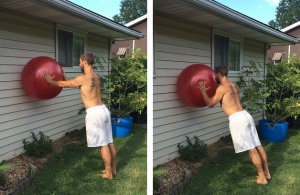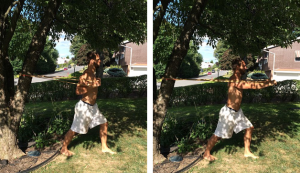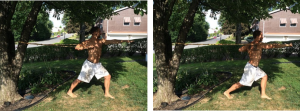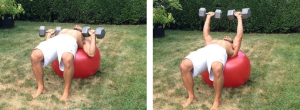Up to this point in our series on the Primal Pattern Movements we have covered movements that use primarily the lower body.
Of course all movements include muscles from the entire body, but now we are going to switch over to those with an emphasis on the upper body. Before continuing I want to bring up the difference between an open chain and a closed chain movement.
Open Kinetic Chain
When an extremity is moving against a force it is free to move. Think throwing a ball, pulling weeds or closing a door. I do not like to do much open chain movements for the lower extremity as it does not have much carryover to the world with the exception of striding during gait and the legs during swimming.
Closed Kinetic Chain
The closed chain always wins. Think about the squat, bend or lunge we covered over the last few weeks. We were never able to overcome the immovable force we were giving force to. This can apply to both the upper and lower extremities much more than open chain. Each time we push off during gait, stand up or bend over we are using this for the lower extremities. Using the push up and pull up are great ways for swimmers to help get through the water better (yes during swimming the upper body is functioning in a closed kinetic chain so think about that for your training program). Also, think pushing up from a chair or pulling on something to help you get off the ground.
Push Up/Wall Push Up
These are great starting points for the push movement pattern, but as we have covered before don’t try to move too fast. Make sure your form is spot on with a wall push up before dropping to the ground. I am also a huge fan of closed kinetic chain movements for shoulder health. They help to allow for proper recruitment of the rotator cuff and stabilization of the scapula. Even something as simple as a mammalian crawl can be a great way to begin recovering from shoulder injury.
Bilateral Cable Push
Take those cables over each shoulder and push ahead. I like to start here and then go to the single arm pushing as it leaves out the transverse (rotational) plane and makes it an easier learning process.
Single Arm Cable Push
As soon as ready get into the single arm work. We don’t often push with two arms in the closed chain so being able to integrate the single arm work will be critical to proper movement. We can often handle more weight per arm when getting into the single arm work and therefore want to progress here to reach that maximal strength. Also a must for any throwing athletes (or parents).
Swiss Ball Dumbbell Press
One of my favorites and for those of you without a great cable set this is certainly something to throw in. It can be done with one or both arms and certainly offers great stability for the core and backside of the body. The other critical benefit is that it allows the scapula to move freely on the ball. This is something that cannot happen on a normal bench and why I prefer the Swiss Ball to keep from impinging the glenohumeral joint. Heck you can even do a barbell press on the Swiss Ball, but be sure that whenever doing Swiss Ball exercises that you have a high quality one that is puncture proof.
There you have it. A nice introduction to another movement so get on pushing! Stay tuned in for next week when we work the antagonist movement, the PULL.




